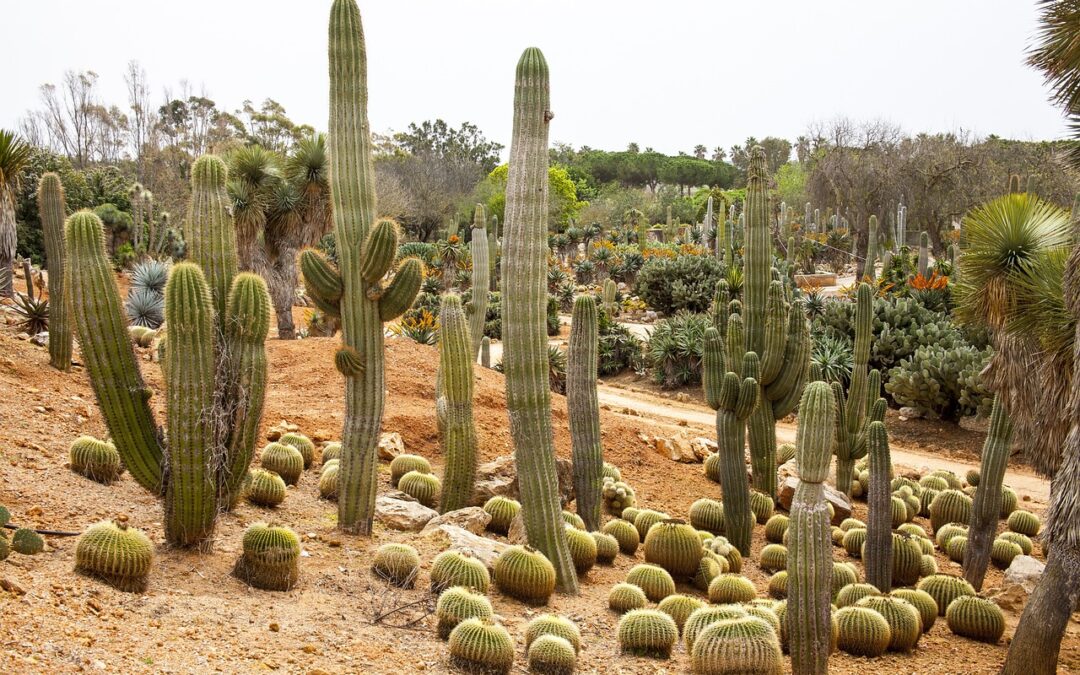Contents
- 1 The Ultimate Guide to Landscaping Materials for Botanical Gardens
- 1.1 Sand and Gravel: The Foundation of Drainage
- 1.2 Mulch: Nurturing Soil and Suppressing Weeds
- 1.3 Pavers and Stepping Stones: Creating Pathways
- 1.4 Decorative Edging: Defining Boundaries
- 1.5 Ornamental Rocks and Boulders: Enhancing Visual Appeal
- 1.6 Water Features: Bringing Nature’s Serenity
- 1.7 Elk Ridge: A Trusted Supplier for Botanical Garden Materials
- 1.8 Choose the Best Materials for Your Botanical Garden
- 2 TL;DR – Too Long; Didn’t Read
The Ultimate Guide to Landscaping Materials for Botanical Gardens
Imagine stepping into a botanical garden, surrounded by vibrant blooms, lush greenery, and the soothing sound of nature. The beauty and tranquility of such gardens are not only due to the plants themselves but also to the carefully selected landscaping materials that support and complement their growth.
In this comprehensive guide, we’ll delve into the world of landscaping materials for botanical gardens, exploring their unique benefits, practical uses, and how they can enhance the aesthetic appeal and functionality of these verdant havens.
Sand and Gravel: The Foundation of Drainage
Sand and gravel form the foundation of botanical garden landscaping, providing drainage and stability to the soil. Sand, with its coarse texture, allows water to seep through quickly, preventing waterlogging that can damage plant roots. Gravel, on the other hand, offers stability and prevents soil erosion, especially on slopes.
Mulch: Nurturing Soil and Suppressing Weeds
Mulch, a layer of organic or inorganic material spread around plants, plays a crucial role in plant health. Organic mulch, such as compost or bark, enriches the soil with nutrients, improves moisture retention, and suppresses weeds. Inorganic mulch, such as gravel or rubber, also helps suppress weeds and maintains soil temperature.
Pavers and Stepping Stones: Creating Pathways
Pavers and stepping stones provide convenient access to different areas of botanical gardens while protecting delicate plants from foot traffic. They come in a wide range of materials, including concrete, natural stone, and brick, allowing for customization to match the garden’s design scheme.
Decorative Edging: Defining Boundaries
Decorative edging defines the boundaries of garden beds and pathways, adding a touch of elegance and organization. Materials such as brick, stone, or metal can be used to create curves, angles, or raised borders, showcasing the beauty of plants while preventing soil from spilling onto walkways.
Ornamental Rocks and Boulders: Enhancing Visual Appeal
Ornamental rocks and boulders can add natural beauty and dimension to botanical gardens. Large boulders can create dramatic focal points, while smaller rocks can be used to create rock gardens or accentuate specific plant features.
Water Features: Bringing Nature’s Serenity
Water features, such as ponds, fountains, or streams, introduce a calming element to botanical gardens, attracting wildlife and enhancing the overall ambiance. They can be constructed using materials like concrete, stone, or fiberglass and can vary in size and design to suit the garden’s scale.
Elk Ridge: A Trusted Supplier for Botanical Garden Materials
For high-quality landscaping materials that meet the unique needs of botanical gardens, Elk Ridge stands out as a trusted supplier. With an extensive selection of sand, gravel, mulch, pavers, edging, rocks, and other materials, Elk Ridge provides products that are durable, aesthetically pleasing, and environmentally responsible.
Testimonials:
“Elk Ridge’s mulch blend has transformed the soil in our botanical garden, boosting plant growth and reducing maintenance.” – Head Horticulturist, New Haven Botanic Garden
“The decorative edging from Elk Ridge adds a sophisticated touch to our garden beds, highlighting our plant collections and creating a cohesive look.” – Landscape Designer, Chicago Botanic Garden
Choose the Best Materials for Your Botanical Garden
When selecting landscaping materials for botanical gardens, consider the following factors:
- Plant requirements: Different plants have specific soil, drainage, and mulching needs.
- Garden design: The materials should complement the overall design and aesthetic of the garden.
- Durability: Choose materials that can withstand weather conditions, foot traffic, and heavy plant growth.
- Cost: Determine a budget and choose materials that offer value for money.
TL;DR – Too Long; Didn’t Read
Landscaping materials are essential for botanical gardens, providing drainage, soil enrichment, and aesthetic appeal. Sand and gravel form the foundation, while mulch nurtures soil and suppresses weeds. Pavers and stepping stones create pathways, and edging defines boundaries. Ornamental rocks and boulders enhance visual interest, and water features bring serenity. Choose materials that meet plant needs, complement garden design, and offer durability. Elk Ridge is a trusted supplier with a wide selection of high-quality materials for botanical gardens.

